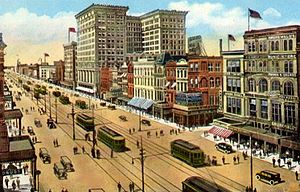Title: Avoiding Wearing Yellow during Exams
General Information about item:
- Customary Folklore, Superstition
- Language: English
- Country of Origin: Spain
- Informant: CE
- Date Collected: 10-26-2021
Informant Data:
CE is a freshman (‘25) at Dartmouth College. She grew up primarily in the Netherlands but spent three years living in Spain. Her father is originally from Spain and still splits his time between Spain and the Netherlands. She mentioned that she is fairly superstitious especially when it comes to exams.
Contextual Data:
- Cultural Context: This superstition comes from Spanish culture. The color yellow is believed to be associated with sulfur and the Devil; therefore, it is said to bring bad luck to certain situations such as a test or interview.
- Social Context: CE first learned this from her dad when she was living in Spain when she was 10 years old. Her dad who grew up in Madrid learned this superstition during his childhood, and always avoided wearing yellow before tests and interviews. He then passed this onto his two daughters who also avoid wearing yellow during tests. After learning the superstition from her dad, CE noticed that her other classmates also avoided wearing yellow on days they had tests. CE and her friends later acknowledged that they had all learned this superstition from their parents at some point during their childhood. This superstition was collected during an in-person interview.
Item:
In Spain, students avoid wearing any yellow clothing when they are taking an exam. The color yellow is believed to be associated with sulfur and the Devil; therefore, it is said to bring bad luck to certain situations such as a test or interview. To avoid this bad luck and getting a bad grade on the exam, students intentionally do not wear any yellow clothing for exams.

Transcript:
“My pre-test superstition is that I never wear any yellow clothing on days that I have a test because if I do it will bring bad luck and I will get a bad grade on the test. I do this for any test or exam. Yellow is associated with sulfur and the Devil so I was told that it would bring bad luck to certain situations such as a test or interview. So in order to avoid this bad luck, I avoid wearing yellow. I learned this from my dad when we were living in Spain when I was 10 years old. My dad is from Spain and learned this superstition during his childhood. He always avoided yellow before tests and still avoids wearing yellow during interviews or important meetings. After learning this superstition, I noticed that my friends also didn’t wear yellow for the test. I later talked to them about it and found that they shared this superstition and had learned it from their parents and grandparents. Even after moving back to the Netherlands, my family and I still avoid wearing yellow on days we have tests and interviews.”
Informant’s Comments:
- “I really don’t own very much yellow because I know that I will never wear it on days that I have tests.”
- “Even after moving back to the Netherlands, my family and I still avoid wearing yellow on days we have tests and interviews.”
- “I plan on telling my kids about this superstition.”
Collector’s Comments:
- This follows the magic superstition structure which is “If you do A then B”. The superstition goes as follows: if you wear yellow clothing during an exam, then you will have bad luck and do poorly on the exam.
- I found it really interesting how CE continued to do this superstition after moving back to the Netherlands and even more interesting how she continues to avoid wearing yellow at exams at Dartmouth.
Collector’s Name: Caroline Carr
Tags/Keywords:
- Superstition
- Spanish
- Female
- Student
- Yellow clothing

